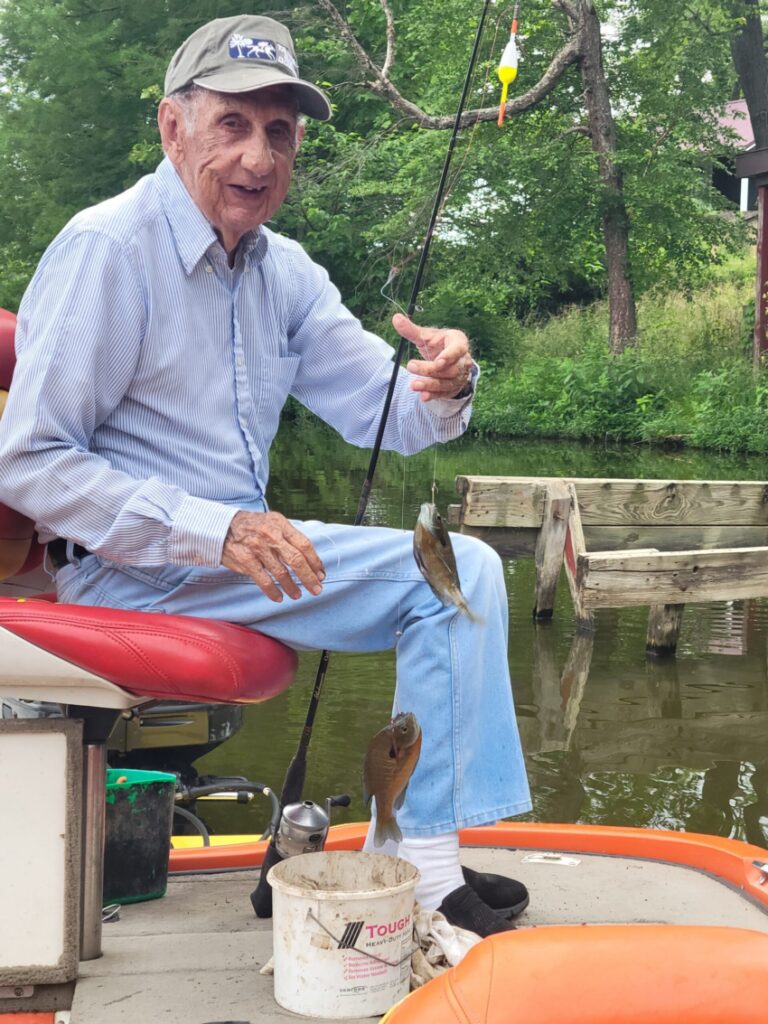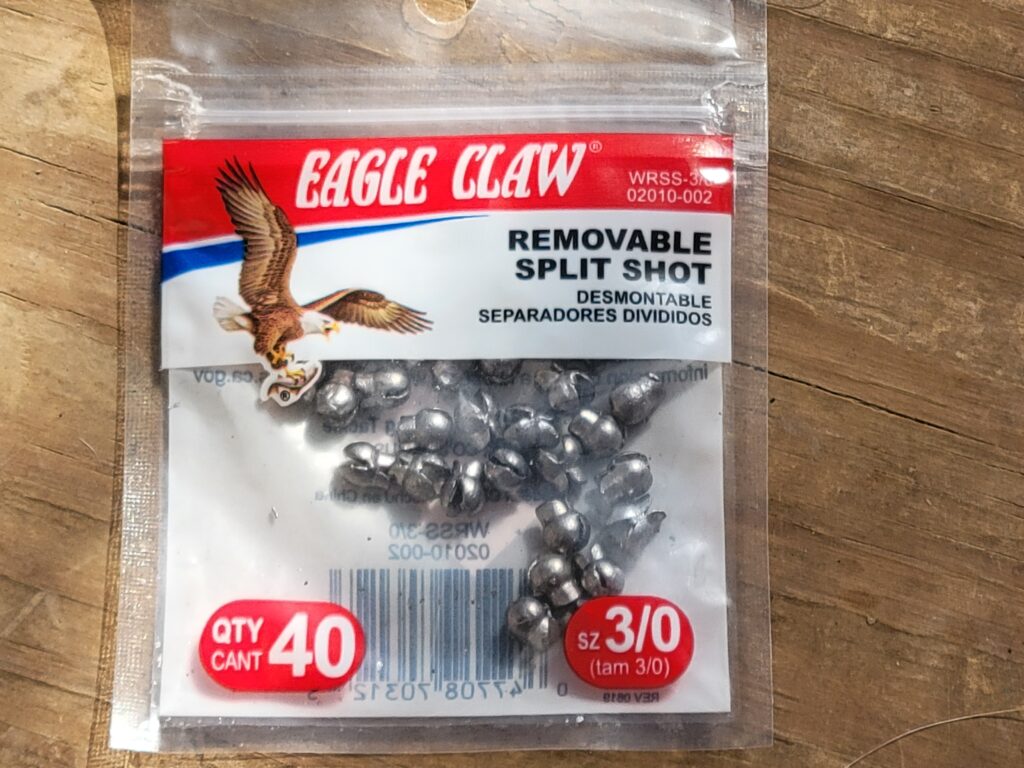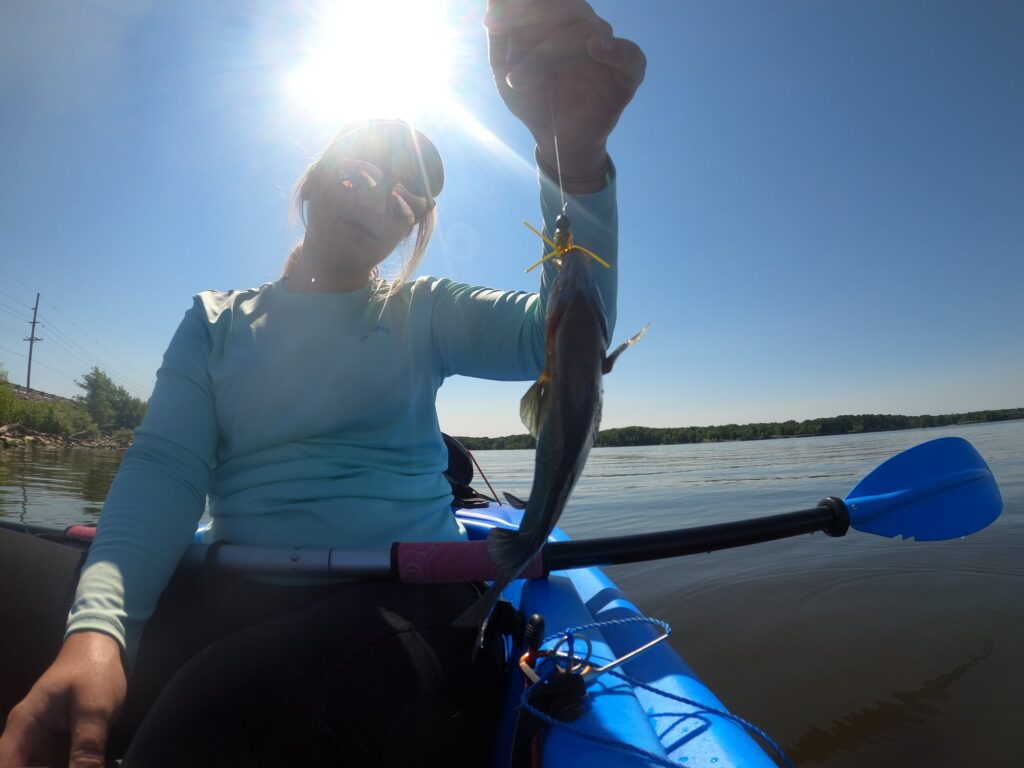Bluegill
How To Catch Bluegill And Sunfish For Beginners
Table Of Contents:
- What Are Bluegill?
- What Are The Different Types Of Bluegill?
- Why Are Bluegill So Popular?
- What Do Bluegill Prefer To Eat?
- Are Bluegill Caught In Deep Water Or Shallow Water?
- What Pound Test Line Should You Use For Bluegill?
- Where Bluegill Can Be Found In A Lake
- How To Catch Bluegill Around Docks
- How To Catch Bluegill Around Riprap
- How To Catch Bluegill From The Shore
- Do Bluegill Taste Good?
What Are Bluegill And How Do You Catch Them?
Think about the first fish you’ve ever caught. If you’re a freshwater fisherman than over 80% of you will say it was a bluegill or any variety of sunfish that heavily populates our local waters. They are the absolute best option to fish for when introducing a child to fishing!
The Sunfish refers to over a dozen types of small panfish found in lakes, rivers, streams, marshes, and is one of the most stocked fish in private ponds. They can get over ten inches long and depending on the species of sunfish can actually get as large as six pounds!
They’re one of the most important fish to balancing an ecosystem as they keep insects and microbes at healthy levels while at the same time are an excellent food source from predator fish such as largemouth bass.
They’re ferocious feeders, harder fighters and make one of the most delicious cuts of fish anywhere that can be cooked in countless ways.
What Are The Different Types Of Bluegill?
Sunfish are usually distinguishable by having a black dot as their ear. Outside of that, you’ll have to look for clues in breaking down each species from dorsal fins, color, and jaw lines. We will take a look at the more popular species caught in American waters.
Bluegill Sunfish
Bluegill are the staple of most lakes and are first thought of when someone mentions sunfish. Brim, Bream, or even Perch are descriptive terms used depending on where you’re fishing.
Male Bluegill (as with most sunfish) have rich darker colors and a bright orange underbelly while females tint more towards yellow.
Red Ear Sunfish
My absolute favorite of all the sunfish is the Red Ear. Shellcracker is the other name they go by.
They spawn a couple of weeks earlier then bluegill, then migrate off shore to look for snails and other crustaceans.
What makes these fish my favorite is their sheer size! Redear can get up to 6lbs though the average comes in at just under a pound.
Goggle Eye Sunfish
Whether you call them Rock Bass, Red Eye, or Rock Perch, the Goggle Eye is the most aggressive fish of all the sunfish species. Well known for hugging the banks, especially rocks, they will immediately attack any potential bait that enters their territory. When you see a fish hit your bobber/cork at the surface, odds are it was a Goggle Eye!
Pumpkin Seed Sunfish
Easily the most attractive and colorful of all sunfish, Pumpkinseed are less common in most lakes but combine the traits of a Bluegill and a Red Ear. When filleted they have some of the cleanest looking meat of any fish around. They’re the smallest average of all sunfish.
How Long Do Bluegill Live?
Bluegill can actually reach ten years old but most succumb to predation. The average life expectancy for a bluegill has been determined to be six to seven years.
Their populations do so well since they can become sexually mature within the first year of life!
Why Are Bluegill So Popular To Catch?
As discussed in the opening of this article, bluegill are really easy to catch! Depending on the season you fish for them there are countless different rigs that can be used to fish for all sunfish!
If you’re introducing someone new to fishing consider taking them during the bluegill spawn where cooler fulls can be caught, cleaned, and enjoyed at a family fish fry.
Some anglers will downsize their equipment to micro rods and reels, along with 4lbs test line to enjoy the thrill of the fight coming from the fish.
Outside of winter, they’re pretty easy to find!
What Do Bluegill Prefer To Eat?
Bluegills are opportunistic feeders but lean heavy to the carnivore side. Knowing this, the most popular baits are crickets, red wigglers, and many insects that are in the “pupa state” of life. Those would include maggots, mealworms, and wax worms.
If you’re an artificial bait fisherman and are looking for the best bluegill bait on the market, look to the Shelton’s Lures Phyllis Bluegill Bug. This bait has many videos depicting how well it works and how to fish it. They come in many colors which will adapt to any water clarity you find yourself on.
Are Sunfish Caught In Deep Water Or Shallow Water?
With the exception of the redear, most sunfish stay shallow as long as the water temperatures remain above fifty degrees. The reason for this is the majority of their food source will either be located by prey entering the water from the bank or falling out of overhanging trees.
Bugs skipping along the surface make up a significant portion of their diet as well and they stay close to shore.
To catch wintertime bluegill, you’ll have to downsize your baits and fish around creek channels on the bottom.
What Pound Test Line Should You Use For Bluegill?
As for what line I prefer to fish with, It’s more about the sport of bluegill fishing to me. I try to get away using the smallest gear I possibly can so that I get to enjoy the fight from sunfish.
I will almost always fish with 6lbs fluorocarbon by Seaguard as it seems to be the highest quality and most invisible to the fish.
In theory, you can fish with just about any lbs. test you’d like since bluegill are competing for your bait with others in the school and will attack in order to secure a meal before its peers.
If the water is gin clear, I would actually downgrade to 4lbs test.
Where Bluegill Can Be Found In A Lake
I’ve caught bluegill virtually anywhere in lakes that are twenty feet and shallower. One of my absolute favorite places is around lily pads as redear can be found in here with the bluegill. Snails love to feed off aquatic plants and red ear love those snails!
Seawalls are another great place to look for sunfish. Most often I can locate pumpkinseed and goggle eye by fishing right up against them!
How To Catch Bluegill Around Docks
If you’re fortunate enough to be able to fish from a dock with any depth to it (six feet or greater) then you should have access to some great bluegill opportunities once the spawn is over.
The bluegill will be suspended a foot or two from the surface but in the shady location. Don’t drop your bait down too far as most fish won’t go down there to feed on it because the predator fish will be hanging out below waiting for one to slip up!
How To Catch Bluegill Around Riprap
Catching summer bluegill is incredibly fun out of a kayak, the only problem is, you can cover a ton of water looking for them which can wear you out! Fortunately, our lakes have a ton of riprap and that’s where you will find me at!
Bluegill will travel in schools waiting just off of riprap on the first drop until they’re hungry. If you go down a stretch of these rocks, odds are you will come to an active feeding school with each pass. These bluegill are really aggressive and hungry as it’s time for them to feed up after recovering once the spawn is over!
How To Catch Bluegill From The Shore
Don’t think that you have to have a boat to catch sunfish. If it’s one thing I’ve tried to hit home, that’s bluegill and all sunfish for that matter like to stay shallow for as long as they can, making them easy for bank fishermen to catch.
The best places to begin your search is where to banks meet up to form a corner. Corners are great because they’re a gathering place for all sorts of fish that follow bank edges.
Small bridges work really well too! If the lake you’re fishing has a bridge then guess what! If the fish want to migrate to the other side, they’re going to have to swim right through the narrows where you’ll be waiting!
Another great place to look for sunfish is around public boat docks. In order to accommodate boats, these areas tend to be a little deeper right off the bank bringing fish in and out of the area all day.
How To Catch Bigger Bluegill
If at some point you find catching bluegill a little too easy, then you may want to try challenging yourself at catching the biggest bluegill in the lake. This is much easier said then done.
Large bluegills tend to spawn in deeper water that may not be as obvious as the simpler shoreline bluegill coves. They will also be swimming more out in open water using the creek channels as highways migrating from one food source to the other.
For larger sunfish, live bait is actually the secondary and it’s time to learn which artificial lures work best. Anytime I go out fishing in my kayak, I only take artificial bluegill baits (the Shelton’s Bluegill Bug) and my best twenty-five fish will almost always outweigh everyone else’s best. It’s simple, the baits are larger and therefore the fish on average will be larger!
Do Bluegill Taste Good?
If you want to start a family feud then take a poll of which fish folks prefer. It will be split right down the middle between crappie and bluegill when it comes to the best tasting freshwater fish.
Bluegill meat is smaller and holds any fry coating well. It also has much flakier meat than crappie which is why some would say it’s the prize of all fish. Since bluegill aren’t much of bottom feeders and grow quickly, their meat is thought to be one of the cleanest, free of toxins and heavy metals that can accumulate in fish twice their age.
Then there’s always the argument of how to cook your sunfish. Some like it whole with only the heads, guts, and scales removed leaving the skin on soaking in some flavor! I personally prefer them just filleted and placed in a wet batter.
Conclusion
If you’re new to fishing and want to learn, there is no better place to start than with catching sunfish. No matter where you’re located at within the country, there’s a pond, river, or stream close by that will hold them!
Using the tips above will help you create a great foundation in your journey on becoming a fisherman. By clicking on any highlighted links you will be able to immerse yourself in more advanced techniques which will become the building blocks of turning you into a real angler!
Once you’ve reached the position of master fisherman, then it will become your responsibility to teach others this art and leave a legacy behind you!




